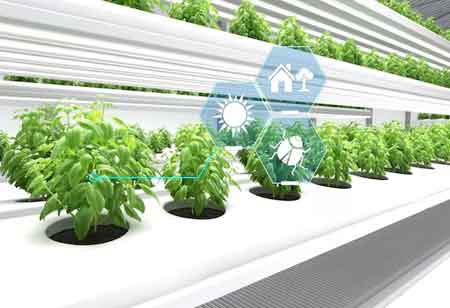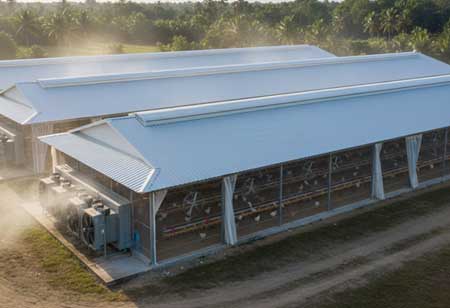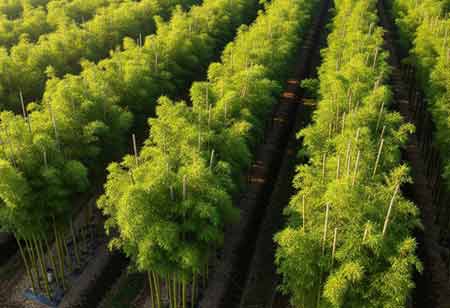Thank you for Subscribing to Agri Business Review Weekly Brief
Sustainable Agriculture: A Pathway to Resilient and Equitable Food Systems
Agriculture’s role in the global economy is indispensable, enabling employment opportunities for a significant proportion of the workforce

By
Agri Business Review | Wednesday, May 17, 2023
Stay ahead of the industry with exclusive feature stories on the top companies, expert insights and the latest news delivered straight to your inbox. Subscribe today.
Owing to the importance of agriculture in the global economy, countries all around the arena ought to adopt effective and sustainable agricultural practices to eliminate green and carbon production and increase crop productivity and yielding.
Agriculture’s role in the global economy is indispensable, enabling employment opportunities for a significant proportion of the workforce. It holds a crucial role play in levelling the gross domestic product (GDP) of nations critically.
Opting for conventional farming practices like intensive usage of synthetic fertilisers and pesticides, monoculture, and large-scale industrial farming requires distinct consideration and often accumulates challenges in the environment, public health, and food security space. Wherein, opting for sustainable agriculture proffers viable solutions in the agriculture space, providing a pathway for more resilient, equitable, and environmentally sustainable food systems benefitting living creatures on earth. The pattern has emerged as the most effective form of agriculture in recent times.
Alongside this, inconsistency in climatic changes in the current scenario is layering erratic weather patterns, elevated soil degradation, and declining groundwater levels. As a result, farmers face various potential challenges in food production for the growing population, causing food scarcity. Sustainable agriculture lands as the most feasible option in the arena, rather than traditional practices that often intensify the issues, causing soil erosion, loss of biodiversity and pollution of water resources.
Choosing reliable sustainable agricultural practices helps in rectifying nearly 70 per cent of global freshwater withdrawals and 80 per cent of deforestation globally. Hence, businesses all around the globe are accelerating a critical transition towards sustainable agriculture practices via feasible measures like implementing regenerative practices and nature-based solutions. Regenerative medicine highly focuses on building soil health to enhance biodiversity and increasing ecosystems' capacity in sequestering carbon via various approaches like conservation tillage, cover cropping, crop rotation, intercropping, and agroforestry. Incorporating these practices in farming systems allows farmers to improvising soil fertility, increasing crop yields and in reducing greenhouse gas emissions, and nitrogen leaching by almost 21 per cent.
Implementing integrated pest management (IPM) techniques, involving multiple strategies aids in managing pests, diseases, and weeds on an effective scale and in minimising adverse effects on human health and the environment. Deploying IPM in an agricultural space critically tames biological controls, crop rotation, using resistant varieties and cultural practices in the arena, gradually decreasing pesticide usage, and thus, improving crop yields to flourish natural ecosystems. Similarly, adopting agroforestry practices has emerged as another alternative practice in sustaining the agricultural sector via the integration of trees and shrubs into critical agricultural landscapes.
This approach holds seamless opportunities to enhance soil fertility and reduce erosion in the farming horizon, accelerating biodiversity practices and providing additional income streams for farmers via the production of timber, fruits, and other non-timber forest products. Agroforestry practices hold an increased potential in the agriculture space in elevating the degraded lands’ productivity by nearly three times, and in sequestering carbon in the soil, along with the biomass.
Establishing sustainability in the agricultural space also considers reducing the vulnerabilities in the sectors and improvising adaptive capacity against climate change impacts. Frequencies and intensity of extreme weather conditions like droughts, floods and storms, are often controlled by climatic changes happening globally, affecting the critical scale of food production and livelihoods. Wherein, adopting climate-smart practices like rainwater harvesting, crop diversification, and using drought-resistant crops reduces the vulnerabilities incorporated in the negative impacts. Hence, farmers are upscaling their adaptive capacity, reducing risks, and safeguarding their livelihoods effectively by opting for resilience to climate change.
Circular agriculture is substantially a closed-loop system, aiming to reduce wastes, recycle nutrients, and regenerate natural resources, requiring efficient practices like composting, cover cropping, and integrated livestock-crop systems. The practice assists farmers in reducing their reliance on external inputs like synthetic fertilisers and pesticides, in addition to improving soil health and reducing waste. One such testamental approach is the Zero Budget Natural Farming (ZBNF) programme which aims to promote circular agriculture practices like intercropping, mulching, and vermicomposting. The practice has facilitated formidable growth in the agricultural arena increasing yields, improving soil fertility, and reducing costs for farmers accordingly.
Adopting critical digital agriculture solutions like precision farming technologies, farm management software, and supply chain management tools levels up the farming supply chain on an effective scale. Harnessing these tools aid farmers in improving efficiency and profitability along with waste reduction, thereby establishing sustainability in the agriculture domain. For instance, deploying precision technologies like drones, sensors, and satellite imagery facilitates farmers with real-time data on soil moisture, nutrient levels, and crop health for effective optimisation of inputs and reduction of costs. Likewise, utilising supply chain management tools like blockchain increases transparency, traceability, and accountability in the food supply chain, thereby, providing farmers with fair prices for the food production process.
Leveraging innovative agri-technologies like weather forecasting, remote sensing, and predictive analytics in the agricultural space enable farmers to anticipate weather patterns, pests, diseases, and market demands. As a result, farmers are assisted in making informed decisions and reducing risks relatively in the farming sector. For example, the meteorological department in India provides timely weather forecasts and advisories to farmers via mobile apps, text messages, and several other channels. It aids in the critical planning of planting and harvesting activities in the agricultural space.
A critical transition towards sustainable agriculture has become a mere demand rather than an option to cope with the growing population, climate conditions, and soaring pressure on natural resources. Adopting these practices on an effective scale aids in preserving the environment and promoting food security all around the APAC and the globe. Therefore, businesses in the agricultural space are critically opting for regenerative practices, crop rotation, integrated pest management, agroforestry, and circularity in the agriculture techniques to achieve effective sustainability in the arena, ensuring efficient and sustainable farming practices.





